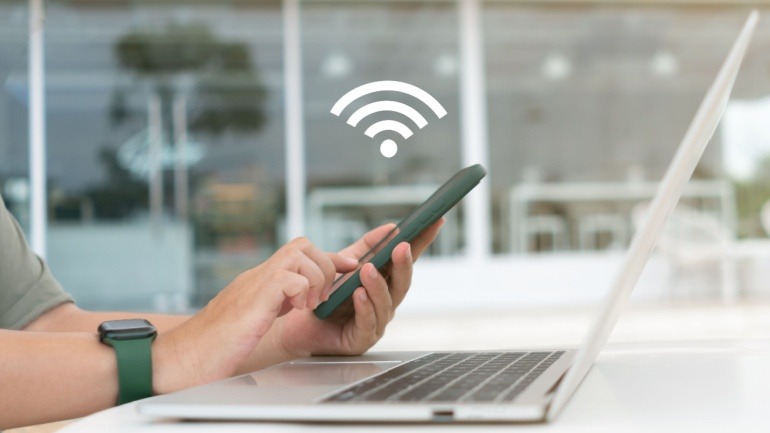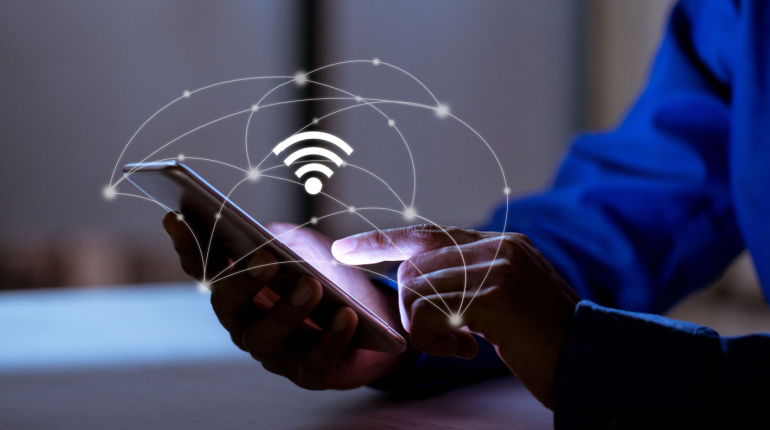The latest Ookla report reveals that cellular connections now surpass Wi-Fi at U.S. airports, averaging double the download speed. Travelers, who traditionally relied on public Wi-Fi, are shifting towards cellular services from major carriers like Verizon, T-Mobile, and AT&T for faster, more secure connections. This trend highlights the need for improved VoIP reliability at airports.
United Airlines resolved a static interference issue affecting Starlink Wi-Fi on some Embraer E175 aircraft by repositioning equipment. The rest of the fleet remains unaffected, and the rollout continues with sixty jets now offering high-speed satellite internet.
AT&T’s collaboration with Karrier One marks a transformative shift in global Wi-Fi offload strategy, integrating vast Wi-Fi infrastructure with a decentralized wireless framework. As mobile users increasingly rely on Wi-Fi, this partnership ensures seamless transitions between cellular and Wi-Fi networks.
The global Wi-Fi landscape is rapidly evolving with the spotlight on adopting the 6 GHz band. This spectrum, offering a substantial 1,200 MHz bandwidth, is positioned as a key enabler for advancing wireless technologies.
Morse Micro, an Australian semiconductor firm, is enhancing IoT solutions with Wi-Fi HaLow technology. In collaboration with Vantron Technology, they aim to produce Wi-Fi HaLow-enabled IoT products, including modules, access points, and IP cameras, expanding connectivity.
The Wireless Broadband Alliance has unveiled an advanced Operator Managed Wi-Fi framework, revolutionizing residential Wi-Fi management. By integrating key standards like Wi-Fi EasyMesh, this update enhances the capabilities for ISPs, improving the user experience.
The UK’s telecommunications regulator, Ofcom, is advancing plans to facilitate shared access to the highly sought-after upper 6 GHz band, proposing two primary frameworks to balance the needs of both mobile and Wi-Fi providers. The first proposed approach, known as variable spectrum split, would allow both mobile and Wi-Fi services to use portions of the spectrum not occupied by the other.
With the advent of 5G and Wi-Fi 6, cellular connectivity offers an enticing alternative to Wi-Fi, especially in enterprise set ups. These advances, along with new approaches to spectrum policy, have spurred the expansion of private cellular networks (PCNs), giving companies more control over their connectivity. A deeper analysis reveals that despite its accessibility, Wi-Fi faces challenges like signal interference and limited coverage, where private 5G networks, underscored by robust security and higher capacity, outperform.
In a strategic collaboration, Boldyn Networks, a leading neutral host provider, has joined forces with Rome’s municipal government, Roma Capitale, to launch #Roma5G, a groundbreaking initiative aimed at revolutionizing the city’s digital infrastructure. The 25-year concession encompasses the development and management of a comprehensive 5G and Wi-Fi network throughout Rome, catering to both residents and the anticipated influx of visitors during major events.
Explore how Wi-Fi service providers enhance subscriber experiences using Calix Revenue EDGE cloud platform for advanced insights, streamlined network management, and innovative offerings like SmartBiz™ tailored to small businesses. Dive into the key differentiators and benefits of adopting these cutting-edge solutions.













